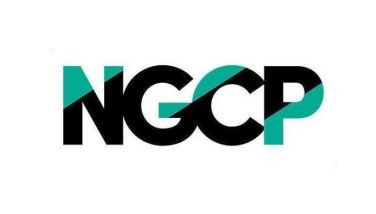Inflation hits 12-month high 1.6% in May
Poll spending, El Niño push prices i
MANILA, Philippines – Inflation gathered pace in May, accelerating to 1.6 percent from 1.1 in April as election spending and El Niño pushed prices higher in the food, transportation, clothing and communication indexes, the Philippine Statistics Authority (PSA) reported yesterday.
“The increase in inflation can be attributed to higher demand due to election spending and partly to supply constraints in agriculture because of the residual effects of the weakening El Niño,” said Socioeconomic Planning Secretary Emmanuel Esguerra.
The latest inflation figure was the fastest pace in 12 months.
Bangko Sentral ng Pilipinas (BSP) Governor Amando Tetangco said the May figure was within the central bank forecast of 1.1 to 1.9 percent and is consistent with the assessment that inflation would slowly rise to within the national government target range of two to four percent this year. The headline figure last month matches the 1.6 percent annual inflation in May last year.
“We will continue to monitor external developments, including next moves of the US Federal Reserve, and domestic developments such as changes in pump prices and utility rates, to see if there is any need to adjust policy stance,” Tetangco said.
Tetangco said the US Fed is poised to raise interest rates because of the upbeat assessment on the US economy.
“The Fed’s statement reflects what some analysts call cautious optimism. Fed is poised to hike because of upbeat assessment but, as in all things, timing is everything. The Fed’s positive outlook on the US economy is good for the global economy especially for trading partners like the Philippines,” he said.
The BSP chief said the current monetary stance of the Philippines is appropriate amid the robust domestic economy as well as the benign inflation environment.
The BSP has kept interest rates steady since September 2014. With the introduction of the interest rate corridor (IRC) system, the BSP slashed the overnight lending rate to 3.5 percent, the overnight reverse repurchase to three percent, and the overnight borrowing rate at 2.5 percent last June 3.
The next policy-setting meeting of the Monetary Board is scheduled on June 23.
“While our view is that our current stance of monetary policy remains appropriate, we should nevertheless use this breather from the Fed to further consolidate own domestic sources of resilience so we can take advantage of external developments,” Tetangco said.
At the national level, annual mark-ups were higher in the indices of eight out of the 11 commodity divisions. In addition, the transport index posted a 0.1 percent annual uptick from a zero growth last month.
The index of education retained its last month’s rate of 3.6 percent, while the index of housing, water, electricity, gas, and other fuels continued to exhibit negative annual rate at 1.2 percent.
On an annual basis, the country’s food alone index accelerated 2.4 percent in May from 1.7 percent in April. A double-digit annual growth of 12.7 percent was recorded in the vegetables index.
Faster annual add-ons were also noticed in the indices of other cereals, flour, cereal preparation, bread, pasta and other bakery products at 1.4 percent; meat, 2.3 percent; fish, 2.9 percent; milk, cheese and egg, 1.5 percent; oils and fats, 2.3 percent; and fruits, four percent.
Slower annual hike was, however, seen in corn at 2.5 percent while annual declines were observed in the indices of rice at -0.8 percent and food products not elsewhere classified, -1.2 percent.
Joey Cuyegkeng, senior economist at ING Bank Manila, said the low base effects in the food and the housing components are behind the higher headline inflation.
“We base the effect and the supply shock to food prices in the typhoon season from May to October, pushing inflation close to the low end of the BSP’s two to four percent target by the third quarter,” he said.
ING Bank sees inflation rising to 1.7 to 1.8 percent this year after easing to 1.1 percent last year from 4.1 percent in 2014 due to stable food prices as well as cheaper utility rates arising from soft oil prices.
- Latest
- Trending




























